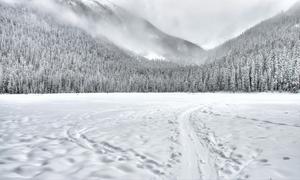The Global Social and Economic Consequences of Mountain Cryospheric Change
As global temperatures rise, initial increases in meltwater may temporarily enhance river flows, but in the long run, glacier retreat leads to reduced water availability. This decline threatens both drinking water supplies and irrigation-dependent agriculture, exacerbating water scarcity in regions such as the Himalayas, Andes, and Alps. Additionally, urban centers like La Paz and Kathmandu, which rely on glacier-fed rivers, are already experiencing seasonal water shortages, putting immense pressure on local populations and infrastructure.
Agriculture and food production are heavily impacted by cryospheric changes, as melting glaciers disrupt irrigation systems that sustain farming communities. Many high-altitude agricultural areas depend on glacial runoff for crop cultivation, particularly in South Asia and South America. As water sources become unreliable, farmers face declining yields and increased dependence on alternative, often costly, water sources.
Hydropower, a key renewable energy source in many mountainous countries, is increasingly vulnerable to glacial retreat. While short-term increases in meltwater may enhance hydropower production, long-term reductions in glacier volume lead to declining water flows, reducing electricity generation capacity. Additionally, infrastructure risks are growing due to the increasing frequency of glacial lake outburst floods (GLOFs) and extreme weather events. Damage to power plants, transmission lines, and reservoirs further complicates energy security, highlighting the urgent need for diversified energy strategies.
The economic repercussions of cryospheric changes extend beyond water and energy security, affecting tourism, ecosystems, and environmental health. Glacier and snow-based tourism industries, including skiing and trekking, are witnessing declining visitor numbers as snow cover diminishes. The loss of permafrost is leading to land instability, endangering infrastructure and settlements. Furthermore, as glaciers retreat, they release stored pollutants, reducing water quality and posing health risks for downstream communities. These cascading effects emphasize the necessity of adaptive strategies, such as improved water management, alternative energy investments, and climate-resilient infrastructure, to mitigate the long-term consequences of cryosphere loss.
